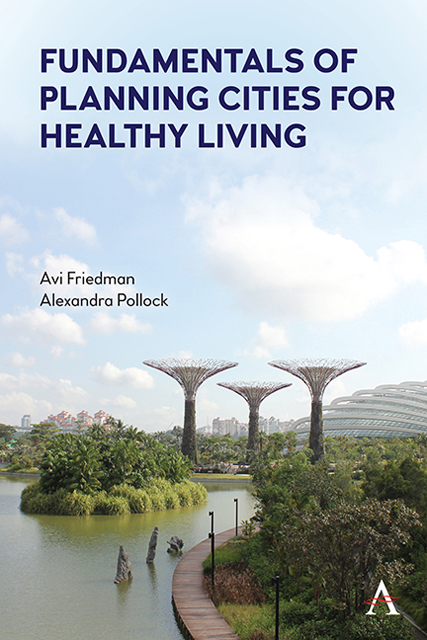Book contents
- Frontmatter
- Contents
- Preface
- Acknowledgments
- Chapter 1 The Broad View
- Chapter 2 Form, Function, and Public Health
- Chapter 3 Planning for Active Mobility
- Chapter 4 Green Open Spaces
- Chapter 5 Active Life in Winter Cities
- Chapter 6 Socializing in Communities
- Chapter 7 Food Production and Distribution
- Chapter 8 Urban Design for Healthy Aging
- Chapter 9 Public and Multi-Unit Residential Buildings and Public Health
- Chapter 10 Healthy Residences
- Chapter 11 Equitable Health Promotion
- Bibliography
- Bibliography for Case Studies
- Illustrations’ Credits
- Index
Chapter 11 - Equitable Health Promotion
Published online by Cambridge University Press: 10 January 2023
- Frontmatter
- Contents
- Preface
- Acknowledgments
- Chapter 1 The Broad View
- Chapter 2 Form, Function, and Public Health
- Chapter 3 Planning for Active Mobility
- Chapter 4 Green Open Spaces
- Chapter 5 Active Life in Winter Cities
- Chapter 6 Socializing in Communities
- Chapter 7 Food Production and Distribution
- Chapter 8 Urban Design for Healthy Aging
- Chapter 9 Public and Multi-Unit Residential Buildings and Public Health
- Chapter 10 Healthy Residences
- Chapter 11 Equitable Health Promotion
- Bibliography
- Bibliography for Case Studies
- Illustrations’ Credits
- Index
Summary
Implementing ideas for healthy cities can not be achieved without the cooperation of governments, the private sector, and the public. Urban design for health needs to be justified in economic, environmental, and sociological terms to best align them with people’s priorities. Previous chapters discussed the health repercussions of urban design strategies and best practices for implementing them. This concluding chapter acknowledges the limitations of urban design as a tool for promoting public health and suggests a broader understanding of the subject as a worthwhile goal for all areas of governance. The chapter discusses how governance at all levels, from municipal to national, plays a role in citizens’ health. It then presents an argument about the importance of accessible health insurance and care. Next, it argues for the importance of general health and physical education and public consultation and social marketing to involve urban dwellers in decisions about the built environment and to ensure resources are being allocated appropriately.
11.1 Government
Without cooperation from multiple stakeholders, many of the interventions described in this book will be a challenge to achieve. Urban planners commonly work with multiple levels of government and consult the public, who are the users of their design. As this book has explored, it is essential that cities are designed to maximize user well-being. But often, the different actors in a city disagree on what the city’s priorities should be. Additionally, many elements that affect public health are entirely outside the domain of urban planning.
Urban planning requires government cooperation at all levels, from municipal to national. The economic structure of a city and the effectiveness of its urban governance inform what programs are possible and what limitations urban designers will face (World Bank 2020).
11.1.1 Social Housing
To be inclusive cities should provide social housing with accessible transit and public amenities. Public housing can be designed to allow access to green space and places to exercise, and socialize, opportunities for growing healthy food, aging in place, and healthy indoor air quality. Without political will and significant public funding, these projects will not be feasible (Day 2018).
- Type
- Chapter
- Information
- Fundamentals of Planning Cities for Healthy Living , pp. 137 - 146Publisher: Anthem PressPrint publication year: 2022

